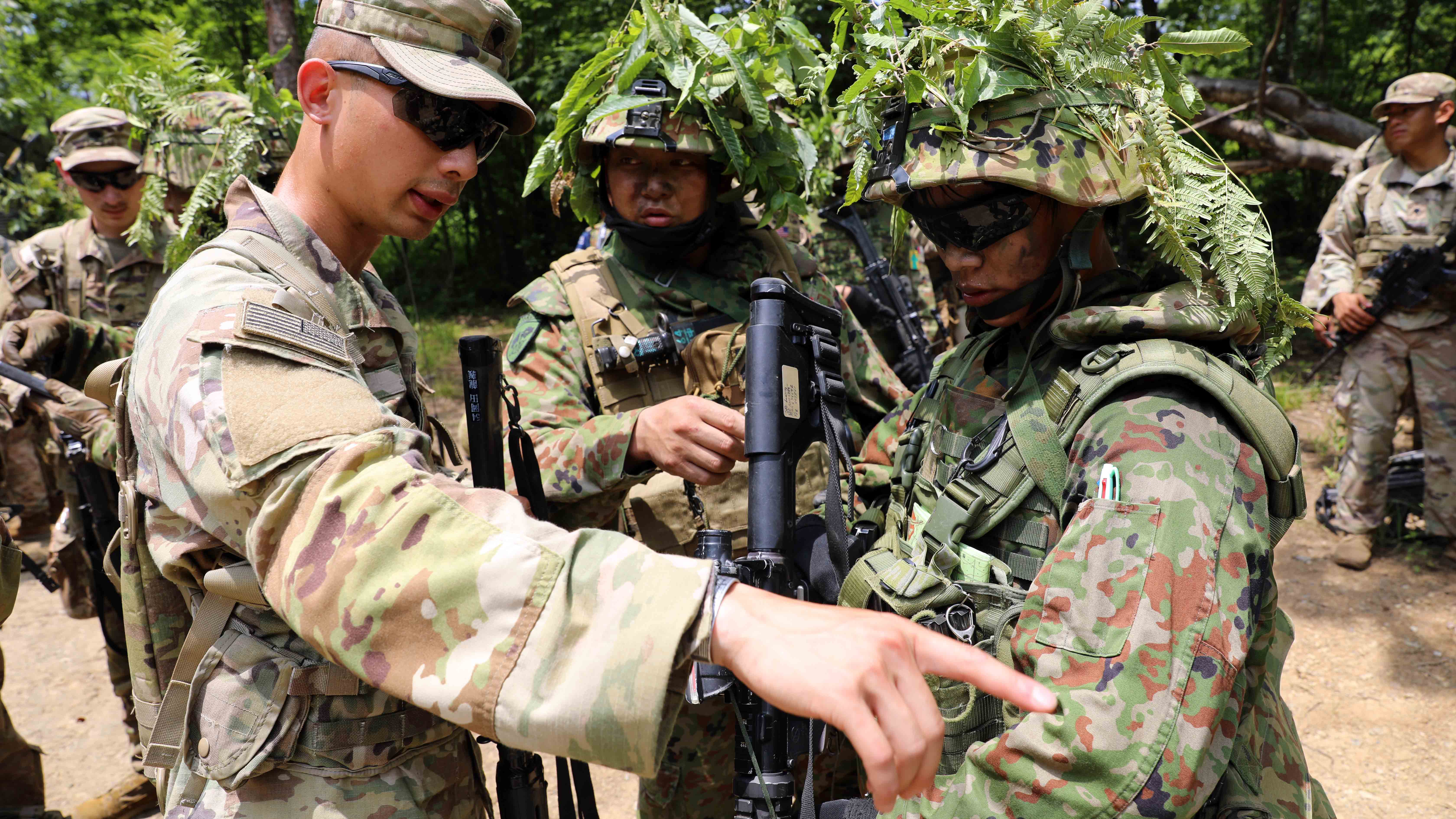Partners are Army’s Indo-Pacific Focus
Partners are Army’s Indo-Pacific Focus

From boots on the ground to stronger relationships with partners and allies, the Army is working hard to deter conflict in the Indo-Pacific region, the service’s senior leaders said.
“It’s important for us to be able to walk and chew gum,” Army Secretary Christine Wormuth said as she described how the Army is staying focused on the Indo-Pacific while also responding to the crisis in Eastern Europe.
Thousands of soldiers have deployed to Europe to bolster NATO allies and partners as Russia continues its assault on Ukraine, but the Army still has troops on the Korean Peninsula, training with Asian partners and more, Wormuth said March 15 during a webinar hosted by the Hudson Institute.
Just as in Europe, the Army has a strong network of partners and allies in the Indo-Pacific, where two-thirds of the countries in the region have chiefs of defense who are army generals, Wormuth said.
“That means that we have terrific relationships with the armies in most of those countries,” she said. “That allows us to really expand on something that I think is a competitive advantage for us, which is our network of allies and partners.”
Army Chief of Staff Gen. James McConville, who also spoke during the webinar, agreed, saying the Army’s relationships are “integral” to its success in the region.
“They allow us access, they allow us to be present, and we work very closely with their forces,” he said.
The goal is to be “very present” in the Indo-Pacific theater, Wormuth said.
In addition to having “combat credible forces” in the region, the Army also is focused on its “significant” modernization efforts, including new capabilities in air and missile defense, the network, Future Vertical Lift and long-range precision fires, Wormuth said.
Advances in technology will “underwrite our ability to deter coercion in the theater,” she said.
But if deterrence fails, the Army has several roles, Wormuth said.
The Army will be central to setting up and securing bases for the joint force, providing command and control and sustainment, and deploying forces for a counterattack, she said.
“There’s very much still a role for soldiers on the ground, even in the Indo-Pacific,” Wormuth said, calling the Army the “linchpin service.”
As the Army juggles demands around the world, it is careful to make sure soldiers are ready for whatever mission may come, Wormuth and McConville said.
This means ensuring that soldiers are highly trained, disciplined and fit, McConville said. Also as important are the will to fight and belief in the mission, he said.
“You see that happening in Ukraine right now,” McConville said, citing the Ukrainian military’s stand against its larger Russian adversary.
The Army also must remain vigilant, particularly in the face of the People’s Liberation Army.
“I’m quite concerned, obviously, about the PLA threat,” Wormuth said. “They’ve embarked on a very impressive 20-year effort to comprehensively modernize their military across every single service. They have very impressive capabilities.”
The Chinese military is also watching the U.S. military, she said. “I know the PLA has been studying us, they’re watching the way we train and maintain readiness very carefully,” she said.
Looking to the future, Wormuth said she and McConville must balance the Army’s finite resources with making sure the force is ready for today and tomorrow. Leaders also must make sure soldiers and families have quality, safe housing and a high quality of life, she said.
“That’s the challenge,” she said.

